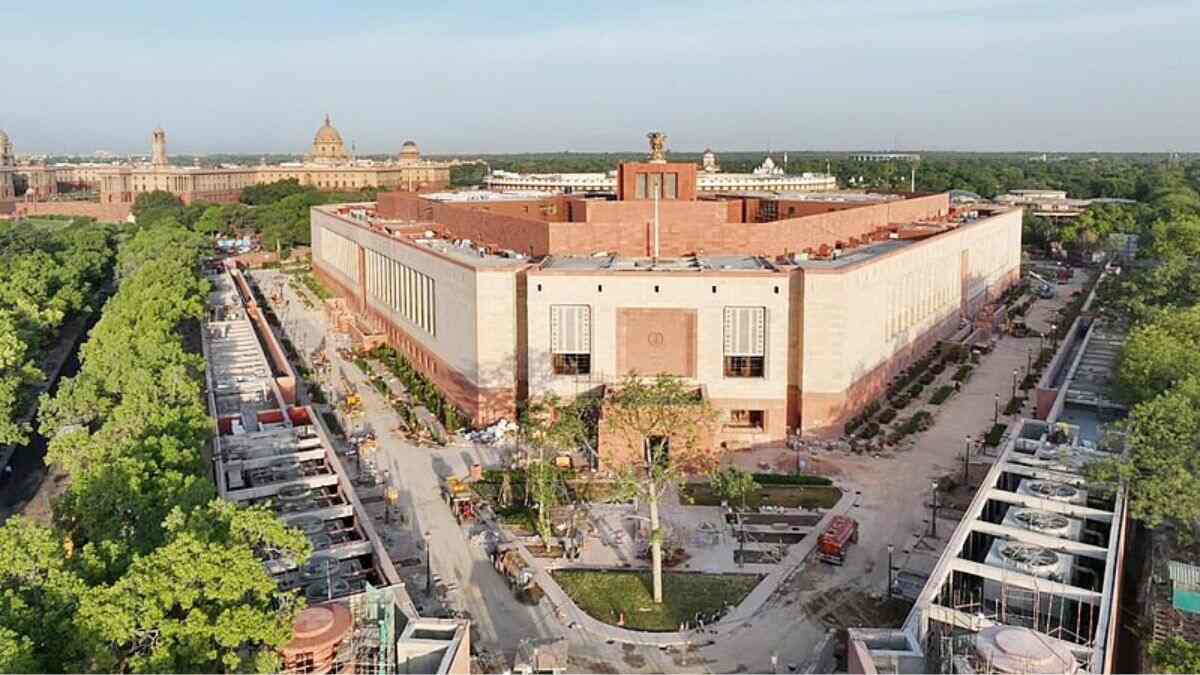Starting on September 18, at the session of the Parliament, it was announced that the session of the House would be moved to the newly opened building of the Parliament, as announced by the Government. Prime Minister Narendra Modi, at his inauguration ceremony on May 28, articulated his vision of this new complex as a cradle of empowerment, fueling aspirations and nurturing them into tangible achievements.
#TO WATCH | Prime Minister Narendra Modi visited the construction site of the new Parliament building in New Delhi last night. He spent almost an hour on the field and saw firsthand the state of construction of the new Parliament building.
(Source: PMO) pic.twitter.com/Od7mgxgz4x
— ANI (@ANI)
September 27, 2021
The more than 96-year-old parliament building stands steadfast as a sentinel, recording India’s democratic odyssey. However, relying on a structure almost a century old, evoking memories of the colonial era, India now takes pride in unveiling an architectural masterpiece that authentically reflects the spirit of a sovereign nation.
In the opening of the session, Deputy Speaker and Chairman of the Rajya Sabha Jagdeep Dhankhar unfurled the national flag at the new Parliament building the previous Sunday.
Priced at 971 million rupees, the new complex is a testament to India’s progress and aspires to embody the dreams of its 1.35 billion citizens, as stated on the official website of the Central Vista Redevelopment Project.
READ I| New Parliament Building of India – Interesting Facts and Controversies
What is different in the new parliament building?
Here are some salient features that distinguish the old from the new Parliament building:
Increased seating capacity
The new Parliament building means a significant increase in capacity and modern facilities. It has been carefully designed to comfortably accommodate 888 Members of Parliament in the Lok Sabha, a three-fold increase over the capacity of the old Lok Sabha. Furthermore, the new Rajya Sabha hall will accommodate 384 members, providing an improved and more comfortable environment for parliamentary deliberations. This expansion paves the way for more efficient procedures and superior benefits for parliamentarians.
The lack of a central hall
Unlike its predecessor, the new Parliament building omits the central hall. Instead, the Lok Sabha within the new structure has been ingeniously shaped to accommodate joint sittings, thereby avoiding the need for additional seats during meetings.
READ I| What is the difference between a passport and a passport? Know the 4 key differences
Integration of modern technology
Each seat allotted to members of Parliament in the new building will be equipped with a multimedia screen—a symbolic gesture to mark the 75th anniversary of India’s independence.
Media-oriented facilities
The new parliament building is equipped with special media facilities. A total of 530 seats will be provided for media workers, while both houses will have galleries that will broadcast parliamentary proceedings to the general public.
Commitment to environmental friendliness
Sustainability occupies a key role in the program of the new parliament building. The structure uses environmentally friendly building materials and includes mechanisms to reduce electricity consumption by 30 percent.
READ I|
Categories: Trends
Source: vcmp.edu.vn
